 |
 |
 |
| |
Prevalence and risk factors for HIV associated neurococognitive disorders (HAND), 1996 to 2010: results from an observational cohort
|
| |
| |
Reported by Jules Levin
6th IAS Rome, Italy July 17-20, 2011
Valerio Tozzi
National Institute for Infectious Diseases
L. Spallanzani. Rome, Italy
Balestra P, Tozzi V, Zaccarelli M, Libertone R, Cataldo G, Liuzzi G, Menichetti S, Giulianelli M, Narciso P, Lorenzini P, Antinori A.
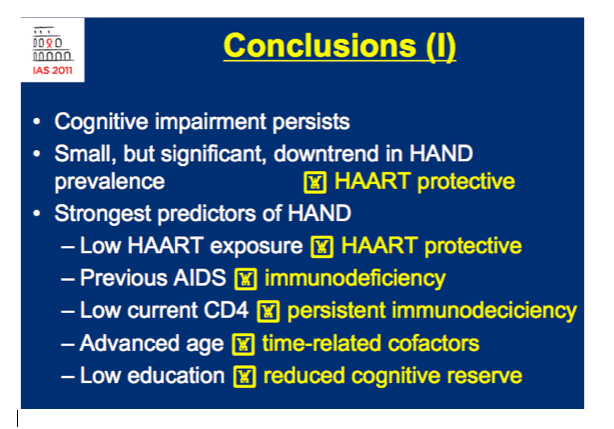
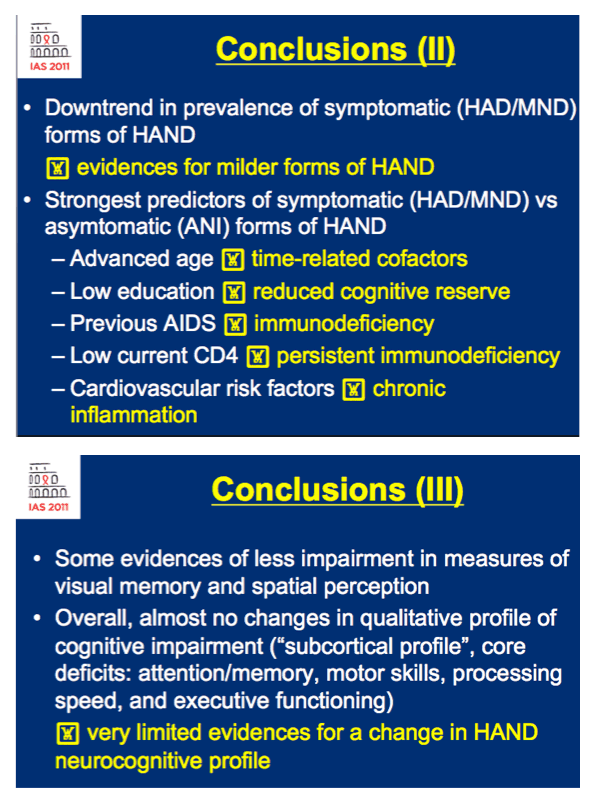
from Jules: this study found 45% of patients with HAND in 1996-98 and 38% in 2008-10, showing that cognitive function remains largely unimproved by HAART in the overall patient population although you see a slight improvement one would've hoped that HAART had more positive effect and other studies have shown this.....of note unadjusted predictors of HAND in this study are older age, males do worse, previous IV drug use was a big predictor in this study of worse outcome (see table below) with 33% in impaired group having IVDU history vs 18% in unimpaired arm - this goes directly opposite to recently published ACTG study which found IVDU history did not in their study affect cognitive function & of course I knew that was rubbish....HCV infection increased risk for HAND, CDC disease stage was relevant with CDC C stage (AIDS) more common among impaired, nadir CD4 (158 in impaired patients vs 231 in unimpaired patients) had an affect, years of education with more education being protective. In the HAART era HCV-infection, age, CDC stage C, previous IVDU, current CD4, HIV RNA levels, and years of education were found to be important factors....in multivariate analysis HAND predictors are age (10 yrs increase) OR 1.51 (p<0.001), CDC stage C OR 2.39 (p<0.001), Education (1 year increase) OR 0.92 (p=0.016), current CD4 (100 cell increase) OR 0.92 (p=0.002), years of HAART exposure (1 yr increase) OR 0.87 (p<0.001), and the affect of previous IVDU OR 1.19 but no longer statistically significant.... The study looked at symptomatic vs asymptomatic patients' predictors unadjusted: age, CDC stage C, current CD4, nadir CD4 (140 vs 190), years of education, and any cardiovadcular risk factor (i.e. diabetes, hypertension, hyperlipedemia, prior myocardial infarction, obesity) were predictors in unadjusted analysis; multivariate analysis found these predictors: age (10 yrs increase) OR 1.03 (p=0.028), CDC stage C OR 2.06 (p=0.002), any cardiovascular risk factor OR 1.71 (p=0.023), current CD4 (100 cd4 cell increase) OR 0.92 (p=0.029), and years of education (1 yr increase) OR 0.92 (p=0.005).
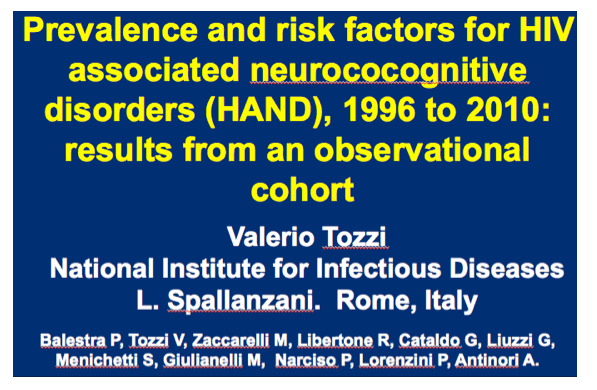
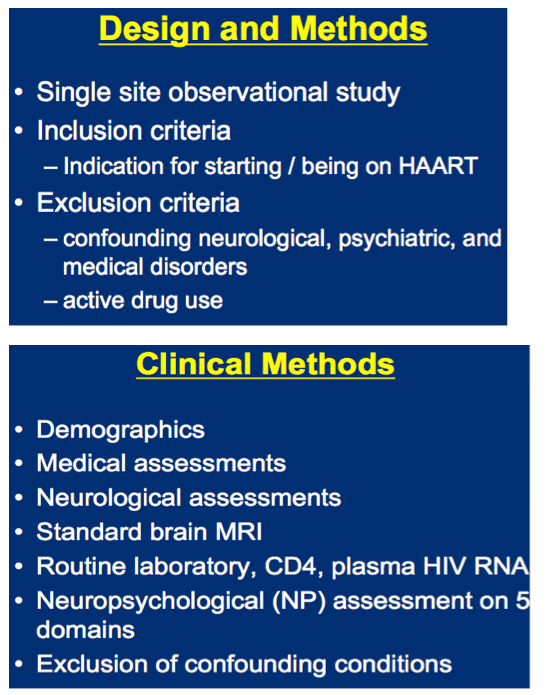
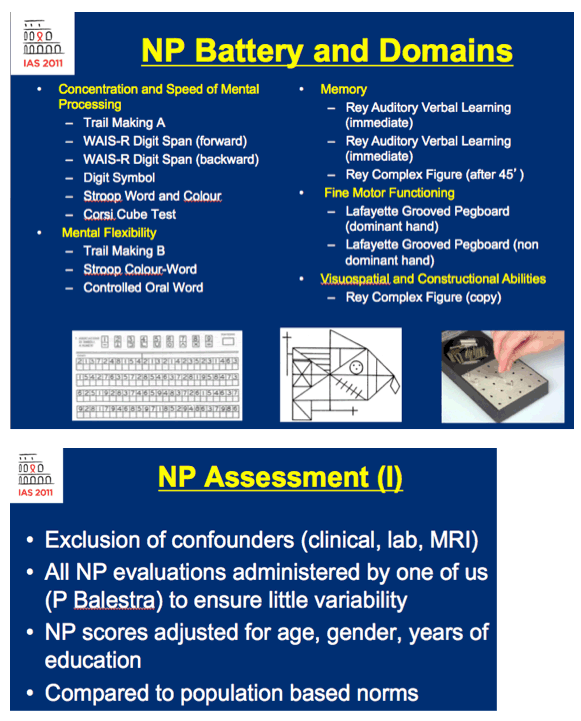
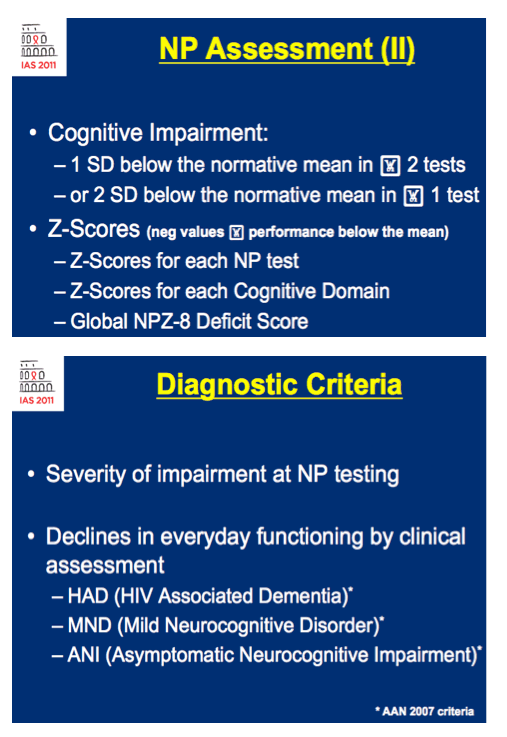
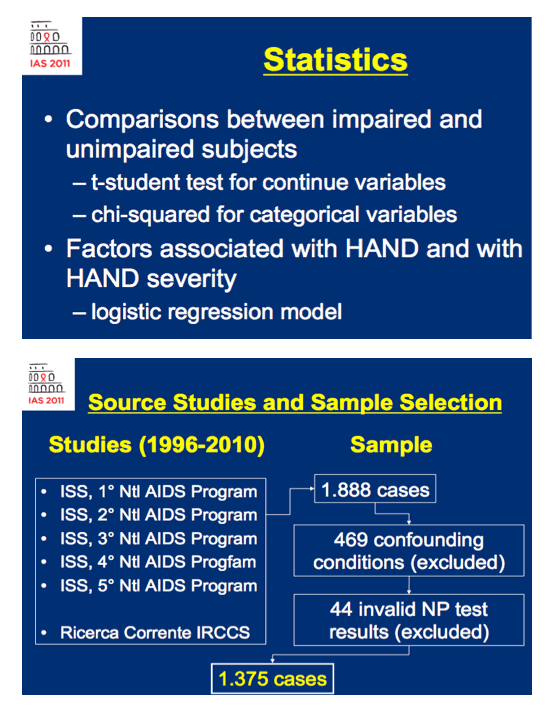
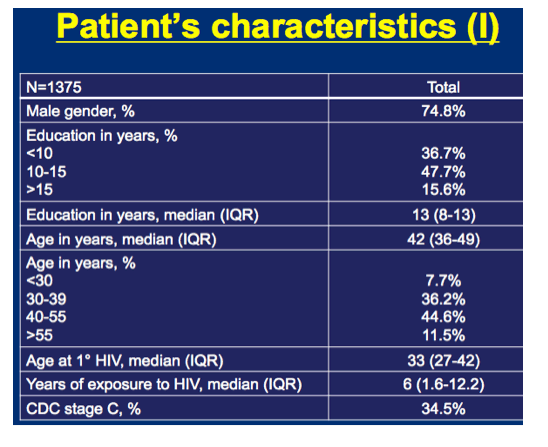
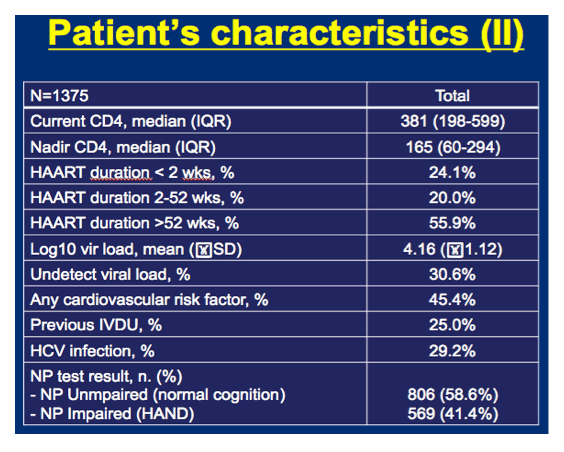
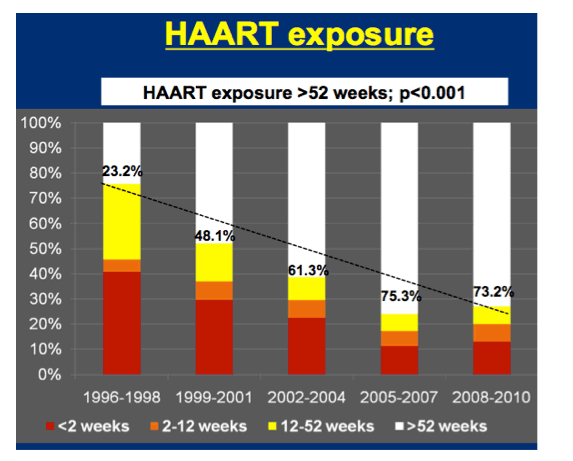



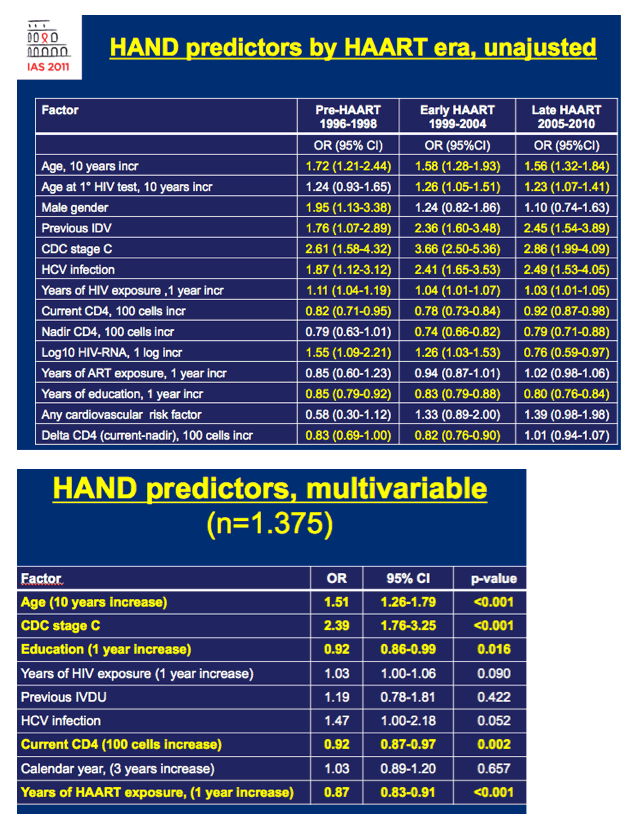
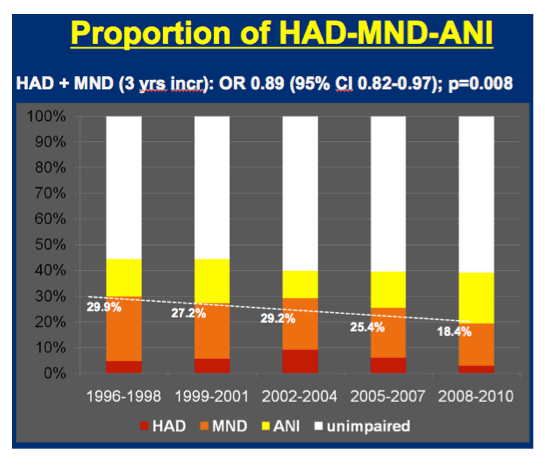
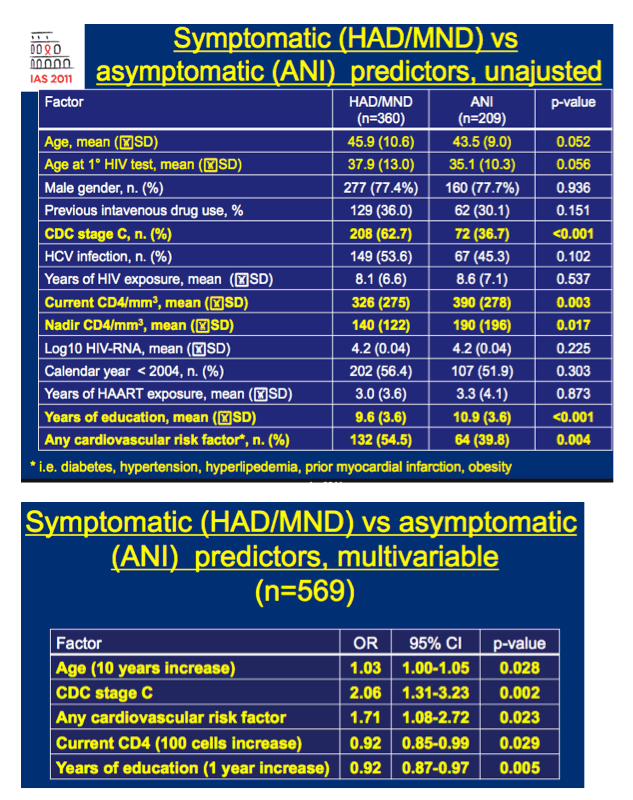
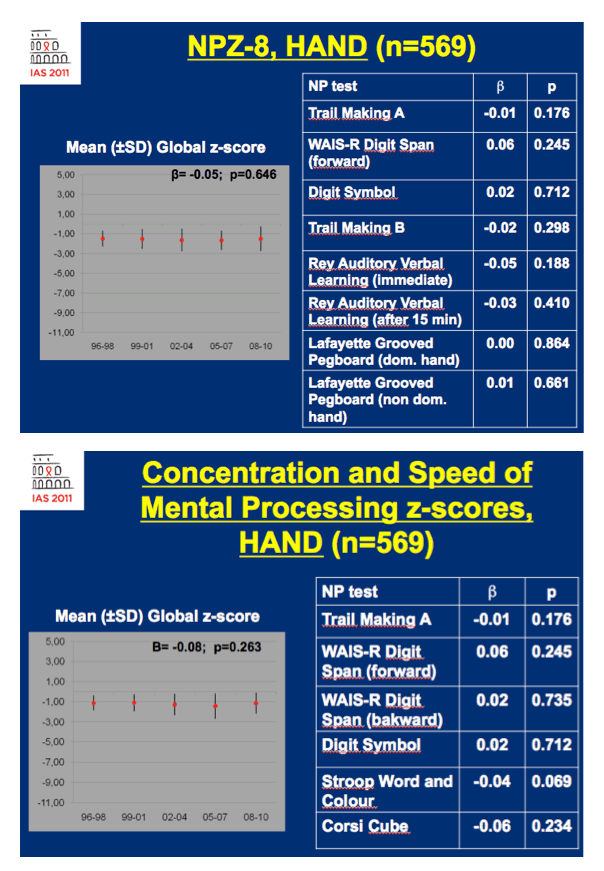
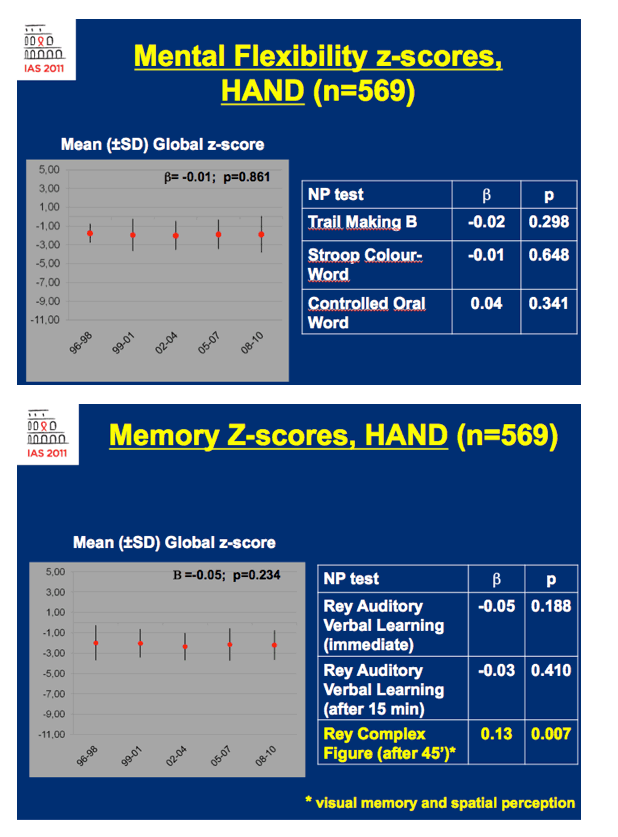
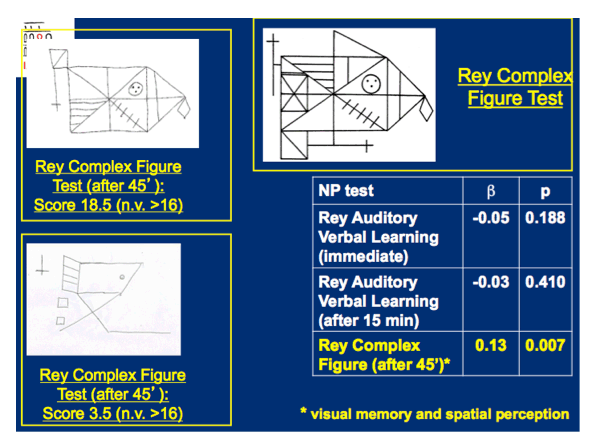
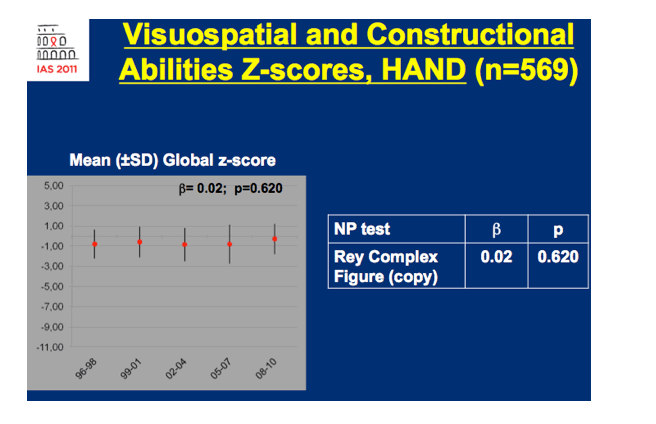
|
| |
|
 |
 |
|
|